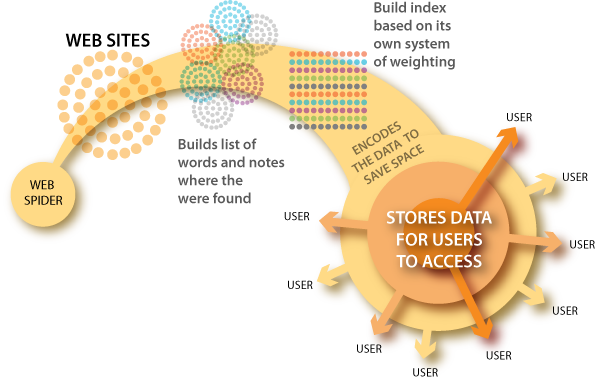
Vol. 1, Issue 5
U.S. Headquarters
Crystal McKenzie, Inc.
220 East 23rd Street, Suite 507
New York, NY 10010
v: 212-598-4567
f: 212-598-4566
e: contact@cminyc.com
w: cminyc.com
CMI provides creative services for business and senior-level decision makers who proactively seek to deliver an exceptional key-stakeholder brand experience.
Referrals are the foundation of our business. Please share our contact information and/or a referral’s name with us. Thank You!
Search Engine Optimization
by Sharon Choi, Cynthia Hagans, & C.G. Jones (2010)

An Essential Marketing Tool
The power and influence of Internet search engines is undeniable. Nowadays, when information is needed on a particular topic, the solution is often to just Google it. Since Google and other search engines are responsible for directing much of this online traffic, it is important that your business maintain viable keywords, the foundation of search marketing success. Relevant keywords on each of the prominent search engines create visibility and, therefore, traffic to your website. Many people try to stuff keywords into every possible place. There is no benefit whatsoever in doing this. As a general rule, optimize one page with up to three keywords or phrases. We recommend starting with one or two. The percentage of keywords in your text should be between three and five percent of the total content of your site.
What Is Search Engine Optimization (SEO)?
SEO is an Internet marketing strategy that increases a website’s visibility within a search engine without paying for sponsored links. Companies can use SEO to target specific types of searches, e.g., image searches, video searches, local searches, etc., depending on the company profile and the type of traffic it wants to attract.
Link: A pointer to another record that takes you to that record when you click on it.
How Does SEO Work?
Before a search engine can tell you where a file or document is, it has to find that file or document. To find information on the hundreds of millions of web pages that exist, a search engine employs special software robots called spiders that build lists of the words found on websites. When a spider is building its lists, the process is called web crawling.

In order to successfully optimize a website, you must consider how search engines work and what keywords potential clients will be looking for. The content and HTML code of the website may have to be modified to make the website more responsive to these keywords and to get rid of any hindrances to search engine indexing activities, or webcrawling. Other optimization strategies include promoting the website so that clients can link to it, contributing to higher visibility in search results. Within your SEO log, you should devote an entire section to the logging of all link-related activity associated with optimizing your site for the Internet. For example, you may wish to subcategorize your link campaign according to whether the links are elsewhere, pointing to your site (referring/incoming links), or present within your site, pointing to other sites (external/outgoing links).
Create an SEO activity log that, among other action items, documents all link-related activity associated with optimizing your site for the Internet. For example, you may wish to subcategorize your link campaign according to whether the links are elsewhere, pointing to your site (referring/incoming links), or present within your site, pointing to other sites (external/outgoing links). You could also track internal links that point to other locations within the same domain.

